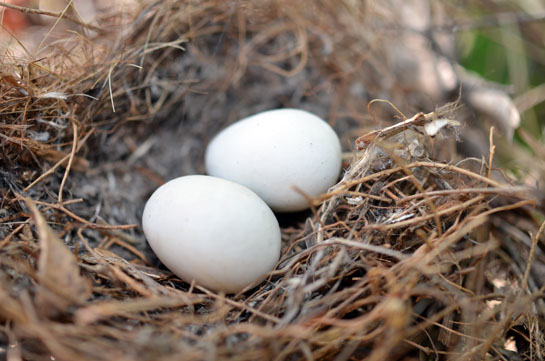No doubt, there were a lot of brightly colored eggs hidden in yards and town parks across the country this past weekend. Now is also about the time we start to see the eggs that are laid by wild birds. The emergency use of spring eggs for sustenance can make a big caloric impact in an otherwise lean foraging season. Just keep in mind that it’s illegal to collect most wild eggs, and this is for emergency survival situations only.
Finding Wild Eggs
The practice of collecting eggs for food has been around for as long as humans have walked the earth. Emu and ostrich eggs provide the biggest meals, but goose eggs are the largest wild bird eggs you’ll find in North America, and a female goose can lay half a dozen white eggs in her large nest. Each of these eggs is double the size of a chicken egg. The caloric content ranges from 175 to 225 calories per egg. Goose nests are often easy to spot, but fiercely protective geese will not give up their eggs without a fight.
As mentioned, the act of stealing song bird and game bird eggs is illegal in most areas, but if you’re in a dire situation and happen upon a nest full of fresh eggs, you can fry, hard boil, or poach your way to a delicious protein-packed meal.
Spot A Good Egg
To avoid finding a yellow chick inside an egg instead of the yellow yolk you were expecting, use the following low-tech “x-ray” technique for a peek inside. “Candling” an egg refers to the very old practice of placing a candle or similar light source behind an egg and observing the condition of the air cell, yolk, and white inside. Today, we can use a flashlight for better visibility inside the egg, but an old-school candle can work just the same. Many species of birds (but not all) have translucent eggs. The light passing through can detect bloody whites, blood spots, or meat spots, and enables observation of germ development. Candling should be done in a darkened room or outside at night with the egg held in front of the lightsource at an angle, so the light doesn’t shine directly into the eyes of the egg inspector. White-shelled eggs that are only a few days old will clearly show the yolk and white. Older eggs will have a reddish area with blood vessels extending away from it that resembles a big red spider. This is the embryo. If the whole egg is dark, there is a chick inside. That said, regardless of the stage of development, the contents of the egg are edible.









